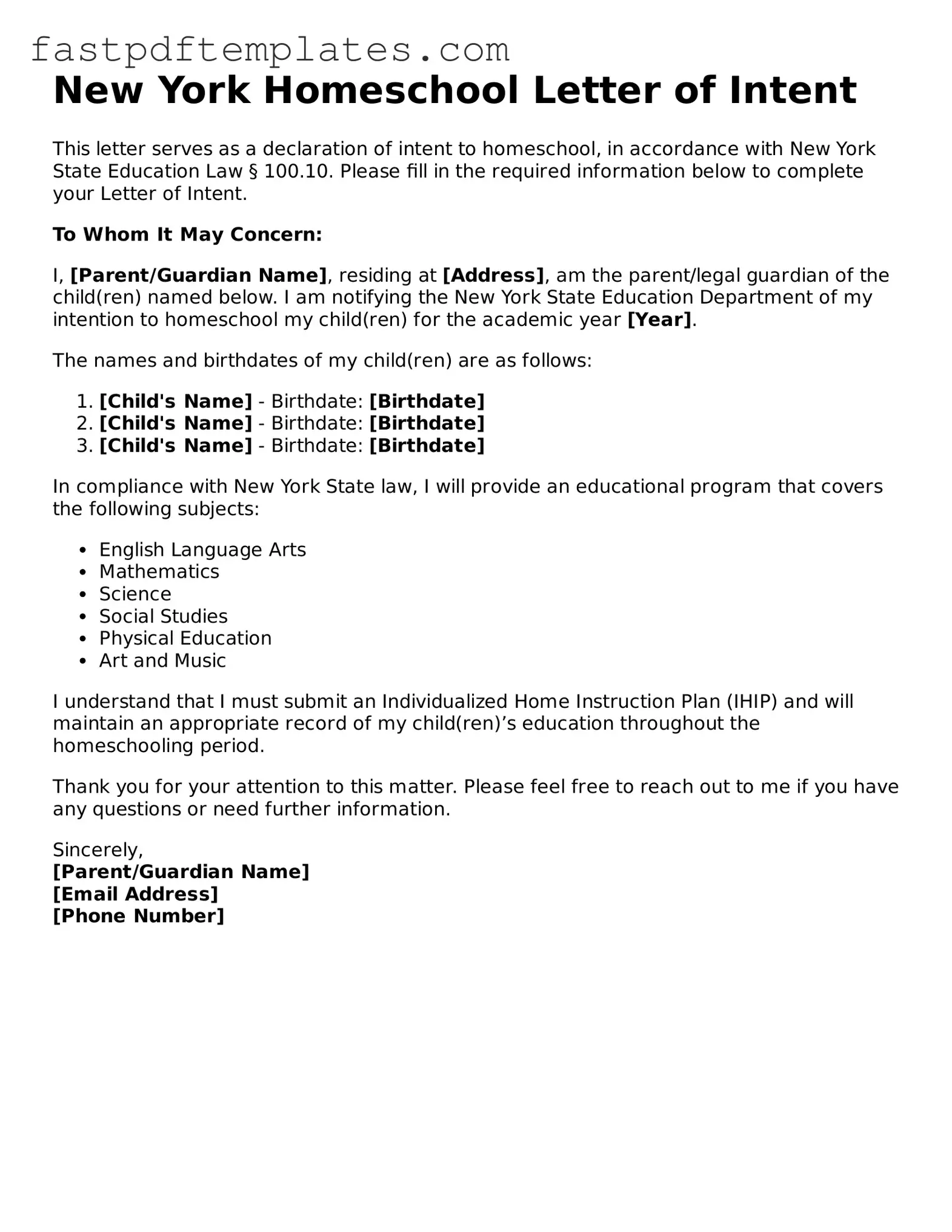The New York Homeschool Letter of Intent form is similar to the IEP, or Individualized Education Program. Both documents serve as a framework for educational planning. An IEP is specifically designed for students with special needs, outlining tailored educational goals and services. In contrast, the Homeschool Letter of Intent communicates a parent's choice to educate their child at home, ensuring that the child receives an education that meets their individual needs. Both documents require a clear understanding of a child’s educational requirements and how those needs will be met.
Another document akin to the Homeschool Letter of Intent is the Enrollment Form used by traditional schools. When parents enroll their children in a public or private school, they fill out an enrollment form that provides essential information about the student, including their name, age, and previous educational history. Similarly, the Homeschool Letter of Intent informs the state about the child's educational setting and intentions, establishing a record of the family's commitment to homeschooling.
The Curriculum Plan is also comparable to the Homeschool Letter of Intent. This document outlines the subjects and materials a parent plans to use throughout the academic year. While the Homeschool Letter of Intent indicates the parent's intent to homeschool, the Curriculum Plan details the specific educational approach and resources. Both documents reflect a parent's responsibility to ensure that their child receives a comprehensive education.
The Affidavit of Support, often used in immigration processes, shares similarities with the Homeschool Letter of Intent in that it demonstrates a commitment to providing for a child's needs. An Affidavit of Support is a legal document where a sponsor agrees to support an immigrant financially. In the context of homeschooling, the Letter of Intent signifies a parent's commitment to provide an educational environment that meets their child's needs. Both documents require a declaration of responsibility and support.
The Child’s Health Record can also be compared to the Homeschool Letter of Intent. This document tracks a child’s medical history and health needs, ensuring that they receive appropriate care. In homeschooling, parents must also consider their child’s health and well-being while planning their education. The Homeschool Letter of Intent, while not a health document, reflects a holistic approach to a child's development, taking into account both educational and health needs.
The State Assessment Notification is another document that aligns with the Homeschool Letter of Intent. This notification informs the state about a student’s performance on standardized tests. While the Homeschool Letter of Intent announces the parent's intention to homeschool, the State Assessment Notification is a follow-up, demonstrating compliance with state educational standards. Both documents are essential for maintaining accountability in education.
Finally, the Transfer Request Form used when moving students between schools bears resemblance to the Homeschool Letter of Intent. A Transfer Request Form facilitates the transition of a student from one educational institution to another, ensuring that their educational records are properly managed. Similarly, the Homeschool Letter of Intent serves as a formal notice to the state about a change in the child’s educational setting, marking the shift from traditional schooling to homeschooling.
